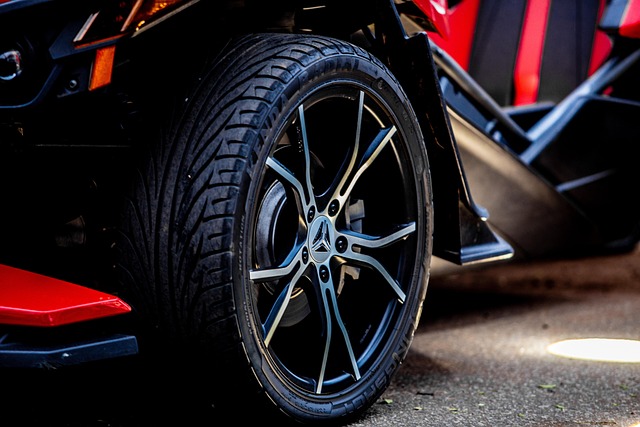Registering Your Car in California: Step-by-Step with VIN Verifier
“Uncertain about registering your car in California? This comprehensive guide breaks down the process step by step. From understanding the registration requirements to gathering essential documents, y…….

“Uncertain about registering your car in California? This comprehensive guide breaks down the process step by step. From understanding the registration requirements to gathering essential documents, you’ll learn how to navigate this crucial task efficiently. Discover the importance of a VIN verifier in California and ensure your vehicle’s authenticity. We’ll also walk you through submitting your application and post-registration tasks. Get ready to hit the road with peace of mind!”
- Understanding the Registration Process
- Gathering Required Documents
- Using VIN Verifier in California
- Submitting Your Application
- Post-Registration Steps and Considerations
Understanding the Registration Process

Understanding the Registration Process in California
Registering a car in California involves several steps that can seem daunting at first. However, with proper preparation and knowledge, the process becomes more manageable. The initial step is to ensure all required documents are in order, including proof of ownership, vehicle identification number (VIN) verifier information, and valid forms of identification for both the owner and driver. It’s essential to have these documents on hand during the registration period.
After gathering the necessary paperwork, the next crucial step is conducting a mobile VIN verification, which can be done conveniently through various online platforms or by contacting the California Department of Motor Vehicles (DMV). This process involves confirming key details about your vehicle using its unique VIN number. Whether you opt for traditional DMV services or leverage a mobile VIN verifier for a more efficient mobile vin inspection, ensuring accuracy throughout will help streamline the registration and prevent potential delays or issues down the line.
Gathering Required Documents

Before you start the registration process, make sure to gather all the essential documents. In California, you’ll need your vehicle’s Registration Application (Form DVF 140), which can be obtained from the California Department of Motor Vehicles (DMV). Additionally, you’ll require proof of insurance and a valid driver’s license. An important step is to verify your Vehicle Identification Number (VIN) using a reliable mobile vin verifier or conduct a VIN inspection to ensure the vehicle’s authenticity and history. This process helps in confirming the car’s make, model, and year, which is crucial for accurate registration.
Some documents, like title certificates, may be required if you’re transferring ownership. It’s always best to check with your local DMV office for an up-to-date list of necessary paperwork. For convenience, many people opt for mobile vin verification services, which can streamline the initial preparation stage and ensure a smoother registration experience in California.
Using VIN Verifier in California

In California, using a VIN (Vehicle Identification Number) Verifier is a crucial step during the car registration process. A VIN verifier helps ensure that your vehicle’s history is clean and free from any discrepancies or potential fraud. Many third-party services offer mobile VIN verification, allowing you to complete this task conveniently without visiting a DMV office. These mobile vin verifiers provide a quick and accurate check of a vehicle’s critical information, such as its make, model, year, and whether it has been reported stolen or has outstanding loans.
This process is particularly beneficial when buying a used car from a private seller. By utilizing a mobile VIN inspection tool, you can verify the vehicle’s authenticity before finalizing the purchase, safeguarding yourself against potential scams or hidden issues. Moreover, having this information upfront can streamline the registration procedure, making it easier to meet California’s requirements for registering your new (or pre-owned) car.
Submitting Your Application

After gathering all the necessary documents and ensuring your vehicle meets California’s requirements, it’s time to submit your application. You’ll need to complete Form SMV230 (Application for Vehicle Registration and Title), available online from the California Department of Motor Vehicles (DMV). Fill out the form accurately, providing detailed information about your vehicle, including its make, model, year, and unique identifier – the Vehicle Identification Number (VIN).
Submitting your application involves either dropping it off at your local DMV field office or mailing it in. For a faster and more convenient process, some individuals opt for a mobile VIN inspection or mobile VIN verification service. These services send a professional to your location to complete the inspection and submit the paperwork on your behalf, saving you time and effort.
Post-Registration Steps and Considerations

After successfully registering your vehicle with the California Department of Motor Vehicles (DMV), there are several crucial post-registration steps and considerations to keep in mind. One key aspect is ensuring that all documents, including the Certificate of Registration and Vehicle Identification Number (VIN) verification report, are accurately completed and retained for future reference.
Additionally, many vehicle owners opt for a mobile VIN verification or inspection service to further validate their car’s authenticity and history. These services use advanced technology to cross-reference the VIN with various databases, providing a comprehensive report on the vehicle’s past, including ownership changes, accident records, and maintenance histories. Such measures contribute to transparency and peace of mind for California drivers.
Registering a car in California is a straightforward process that involves understanding key steps, gathering essential documents, and utilizing reliable tools like the VIN verifier. By following these guidelines, including the efficient use of a VIN verifier, you can ensure a smooth registration experience. Remember to stay organized, double-check your paperwork, and be prepared for potential additional requirements. Once complete, you’ll have taken a significant step in owning and maintaining your vehicle legally in California.







